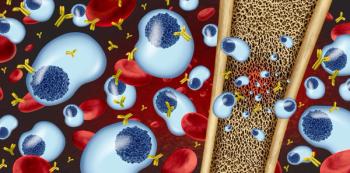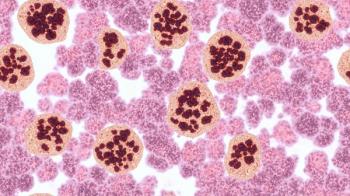
Treatment With Anifrolumab-fnia Shows Promising Rates of Remission for Lupus
More individuals with systemic lupus erythematosus treated with anifrolumab-fnia reached remission compared to the placebo.
Researchers found that the use of anifrolumab-fnia (Saphnelo, AstraZeneca) can aid remission for individuals with systemic lupus erythematosus (SLE). The results were confirmed in a post-hoc analysis of the TULIP Phase III clinical program that compared anifrolumab-fnia to a placebo.
SLE is an autoimmune condition that can impact any organ. The press release noted that the condition could be serious and complex in some individuals, as they could experience inadequate disease control. In the study, the researchers aimed to reach remission status, defined as “reduced organ damage, fewer flares, reduced hospitalization, reduced mortality, and improved health-related quality of life.”
“Despite advances in therapies for [SLE], few patients experience remission, and their disease activity is often not adequately controlled by standard therapy. Compared to standard therapy, with anifrolumab we’re seeing higher rates of patients with no disease activity while bringing oral corticosteroid use to the guidelines-recommended threshold, a real step forward for SLE treatment,” said Ronald van Vollenhoven, MD, PhD, Chair of Rheumatology and Director of the Amsterdam Rheumatology Center in Amsterdam and abstract lead author, in a press release.
The TULIP program was a randomized, double blinded, placebo-controlled trial that was conducted over a 4-year period. At week 208 of the trial, 33% of individuals that were treated with anifrolumab were in remission, compared to 21.4% that were treated with the placebo. The percentage of individuals in remission with anifrolumab increased from year 1 of the study to year 4 by 14.3%. Additionally, 17.2% of individuals on anifrolumab spent a greater time in remission compared to the placebo.
Remission was defined as “no disease activity assessed by 2 measures of disease activity across organ systems.”
The study authors noted that other positive factors when individuals were treated with anifrolumab included reduced disease activity within organs, a decrease in renal involvement, and an improved physical and mental quality of life when taken long term.
The study authors noted that the most commonly reported adverse reactions when treated with anifrolumab included nasopharyngitis, upper respiratory tract infections, bronchitis, infusion-related reactions, herpes zoster, and cough.
“This data adds to our understanding of Saphnelo’s compelling clinical profile in reducing disease activity across organ systems while lowering the use of oral corticosteroids, and now meeting a higher standard of disease control, with remission,” said Sharon Barr, Executive Vice President, BioPharmaceuticals R&D, AstraZeneca, in a press release.
Reference
SAPHNELO data show patients are more likely to achieve and sustain remission in systemic lupus erythematosus compared to standard therapy alone. AstraZeneca. News release. November 7, 2023. Accessed November 7, 2023.
Newsletter
Stay informed on drug updates, treatment guidelines, and pharmacy practice trends—subscribe to Pharmacy Times for weekly clinical insights.




















































































































































































































